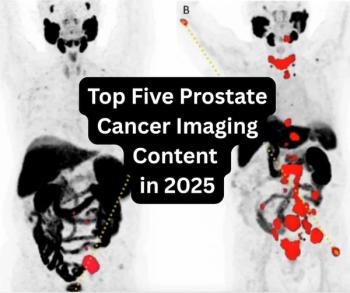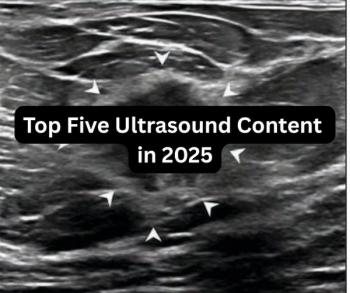
ASIR Cuts Radiation Dose, Keeps Image Quality
Using adaptive statistical iterative reconstruction (ASIR), researchers at St Jude Children’s Research Hospital were able to reduce pediatric CT radiation dose by 40 percent while maintaining optimal image quality, according to the results of a study published recently in
According to the study, the ASIR algorithm “improves noise content in a reconstructed image through modeling fluctuations in projection data due to photon statistics and electronic system noise.” These data are then compared with the actual data, with the difference allowing for image adjustment that is a hybrid of filtered back projection and ASIR.
“In years past, radiologists used filtered back projection simply to reconstruct images for diagnostic viewing,” said study author Samuel Brady, MS, PhD, DABR, a medical physicist in the radiological sciences department at St. Jude Children’s Research Hospital. “With ASIR, radiologists not only get an image reconstruction tool, but additionally, a tool to fundamentally improve image quality and reduce patient radiation dose.”
Brady and colleagues took 183 chest and abdominopelvic CT images and examined them for image noise and contrast-to-noise ratio. The researchers then implemented the use of 40 percent ASIR in conjunction with tube voltage reduction and beam current modulation. Between June 2011 and May 2012, the 40 percent ASIR was blended with 60 percent filtered back projection with 120 kVp; between June 2012 and September 2012, it was used with 100 kVp. After ASIR, 492 images were assessed for noise using the same methods used prior to the implementation of ASIR.
Dose reduction was measured by comparing size-specific dose estimated in the images taken before and after ASIR.
Using ASIR, the average relative dose reduction for chest CT was 39 percent from 4.4 mGy to 2.7 mGy, with a maximum reduction of 72 percent. For abdominopelvic CT the average dose reduction was 29 percent, from 6.8 mGy to 4.8 mGy, with a maximum reduction of 64 percent.
“We demonstrated that one can maintain optimal image quality while reducing the radiation dose to patients,” Brady said. “What was surprising was the fact that two nearly identical images of a patient could be reconstructed and displayed at a reading station, but one of them could have the potential for maximum dose reduction upwards of 60 percent to 70 percent.”
According to Brady, the key to the researchers approach was working for many years to optimize basic image so that using ASIR they were able to maximize the radiation dose reduction.
“Essentially, ASIR has broken the decades-long link between patient image quality and patient radiation dose; previously, it was always ‘better image quality equals higher patient dose,’” said Brady. “Now, a radiologist can have significant radiation dose reduction without reducing patient image quality one bit.”
Newsletter
Stay at the forefront of radiology with the Diagnostic Imaging newsletter, delivering the latest news, clinical insights, and imaging advancements for today’s radiologists.




























